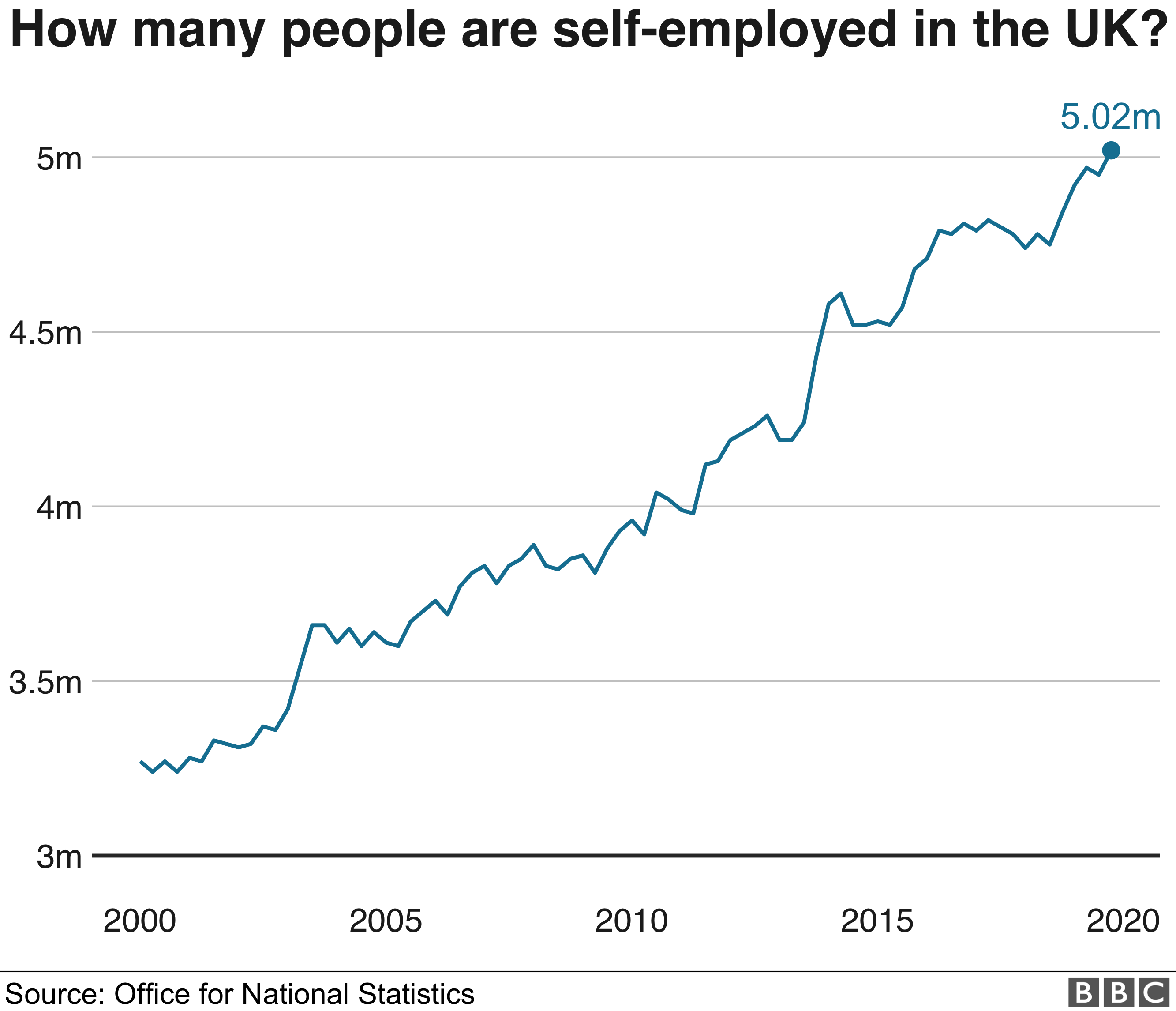
“There will be a further grant of 20% of average monthly profits from November 2020 which has a limit of £1,875 in total which covers a three month period from November.
There will probably be a further one for the following three months but that has not been announced.
More than half of a claimant’s income have to come from self employment.”
Nigel Holland
The self-employed will continue to receive government support under new measures announced by the chancellor.
The extension to the Coronavirus Self Employed Income Support Scheme (SEISS) is designed to protect people in a similar way to employed workers, although some groups will miss out.
What help has been provided?
Chancellor Rishi Sunak announced his original package of measures in the spring.
Activity against extended-spectrum β-lactamase-producing pathogens, notably ESBL-producing E. Certain bacteriostatic drugs may be preferable in cases of streptococcal and clostridial gangrene, because they inhibit the production of the toxins that cause much of the morbidity. If you become pregnant while taking gabapentin, call your doctor Cialis generico en linea. It can be started again 2 weeks after surgery providing no infection is present.
If they suffered a loss in income, a taxable grant was paid to the self-employed or partnerships, worth 80% of their profits up to a cap of £2,500 per month.
SEISS was open to those who were trading in the financial year 2018-2019 and who planned to continue doing so, but whose business has been hit by coronavirus.
Help was initially given as one lump-sum payment which was supposed to cover three months.
Over the summer a “second and final” payment was announced covering 70% of profits, up to a cap of £2,190 per month for another three months – £6,570 in total.
Some 2.6 million people were given at least one of these payments.
What new measures are in place for the winter?
The chancellor’s winter economy plan has included fresh support grants for the self-employed, although these are less generous than the previous payments.
A first, taxable, grant at the start of November will cover 20% of average monthly trading profits, paid out in a single instalment covering three months’ worth of profits, with a limit of £1,875 in total.
The second grant will cover a three-month period from the start of February 2021 until the end of April, but the amount has yet to be set.
Who is eligible?
More than half of a claimant’s income needs to come from self-employment.
The schemes have been open to those with a trading profit of less than £50,000 in 2018-19, or an average trading profit of less than £50,000 from 2016-17, 2017-18 and 2018-19.
The newly self-employed will not receive any help under this scheme. This is because they will not have filed a tax return and therefore HM Revenue and Customs (HMRC) will not know of their self-employed status.
The government’s help comes on top of extended delays for tax payments through the self-assessment system. Payment plans can be set up giving people more time to pay their full tax bill up to January 2022.
Those with the lowest incomes are in line to receive more generous benefits payments compared with before the crisis.
How do I claim the help?
The chancellor said the scheme will cover 95% of those who make most of their money from self-employment, although there has been a significant campaign, and concerns raised by MPs, over a large number of people who miss out on the support. This is how it has worked:
- HMRC will use existing information to identify those eligible and invited applications
- The application requires them to confirm that they meet the eligibility requirements
- It will be paid straight into a bank account, which eligible taxpayers will need to confirm on their application form
- HMRC should have directly contacted those eligible
Self-employed people who pay themselves a salary and dividends through their own company are not covered by the scheme. However, they will have some of their salary covered by job retention schemes if they operate through PAYE.
How many people are affected?
There are more than five million self-employed people in the UK, earning an average of £781 a month. The number has risen fast since the financial crash of a decade ago. About 3.8 million of them may be covered by this scheme.
So far, 2.6 million self-employed have signed up.
Roughly a fifth of the self-employed are in the construction sector, according to the Office for National Statistics (ONS), with hundreds of thousands of others working in the motor trade, professional services, and education.

The chancellor also suggested tax breaks for the self-employed – such as lower national insurance – may end in the future. These were in place because the self-employed do not get sick pay or holiday pay, and to encourage entrepreneurship.
This signals a massive change in UK tax policy, potentially equalising the tax treatment of the self-employed with employees.
